What Do Butterfly Eggs Look Like on Milkweed?
Monarch butterfly eggs on milkweed are small, ovate structures typically less than 1.2 millimeters in height. They exhibit a creamy, pale coloration and are characterized by fine vertical ridges running along their surface.
These eggs are usually laid singly on the undersides of tender leaves, ensuring immediate access to food upon hatching. The distinct ridged texture and strategic placement enhance their chances of survival by protecting against predators and environmental stresses.
To gain a deeper understanding of these fascinating aspects, there are many more intriguing details to explore further.
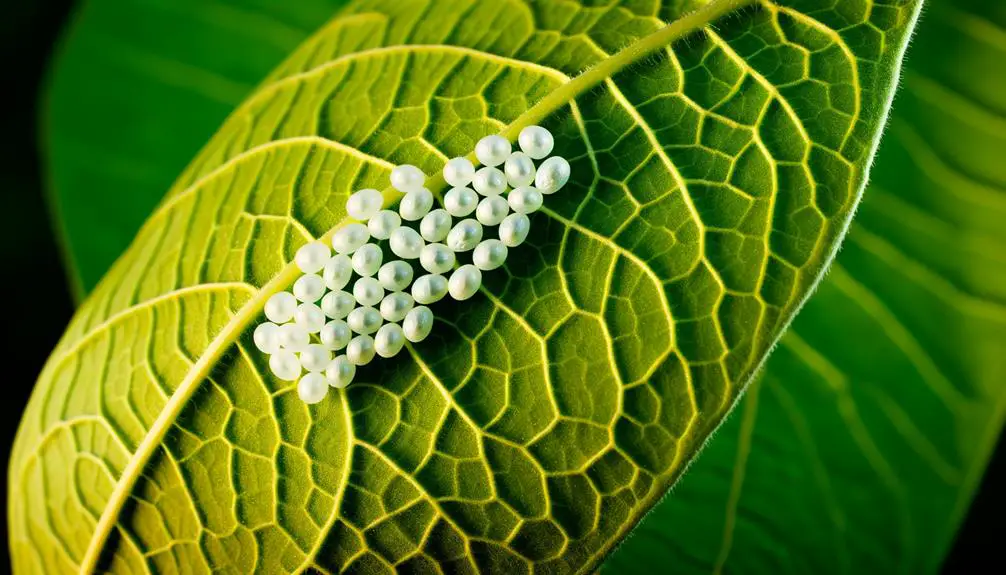
Key Takeaways
- Monarch butterfly eggs on milkweed are tiny, ovate, and about 1.2 millimeters tall.
- The eggs have a distinct ridged texture with fine vertical lines.
- Monarch eggs are creamy white to pale yellow, changing color as they develop.
- Eggs are typically laid singly on the underside of tender milkweed leaves.
Importance of Milkweed
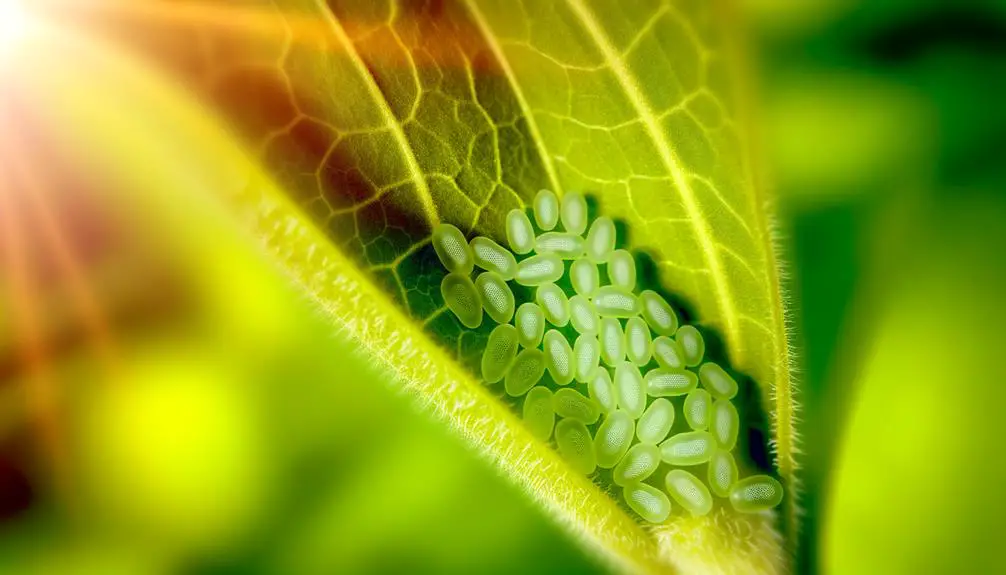
Milkweed (Asclepias spp.) plays a critical role as the primary host plant for Monarch butterfly (Danaus plexippus) larvae, providing essential nutrients for their development. The foliage contains toxic cardenolides, which the larvae sequester to become unpalatable to predators. This mutualistic relationship guarantees the Monarch's survival and propagation.
Additionally, milkweed's dense clusters of small, tubular flowers support nectar-feeding for adult butterflies and other pollinators. The plant's complex root system aids in soil stabilization, contributing to ecosystem health.
However, habitat loss and widespread herbicide use threaten milkweed populations, thereby jeopardizing Monarch populations. Conservation efforts focus on habitat restoration and the cultivation of milkweed to sustain Monarch butterfly populations and maintain ecological balance.
Types of Butterfly Eggs
Among the diverse Lepidoptera, butterfly eggs exhibit remarkable variation in shape, color, and texture, reflecting adaptations to specific environmental conditions and host plants.
For instance, some eggs are spherical, while others are conical or barrel-shaped. Colors range from translucent white to yellow, green, or even black, depending on the species. The surface texture can vary from smooth to intricately sculptured with ridges or pits.
These morphological traits are vital for camouflage and protection against predators and environmental factors. Additionally, the placement of eggs on host plants, such as the underside of leaves or within crevices, further enhances survival.
This diversity underscores the evolutionary strategies butterflies employ to guarantee the successful development of their larvae.
Identifying Monarch Eggs
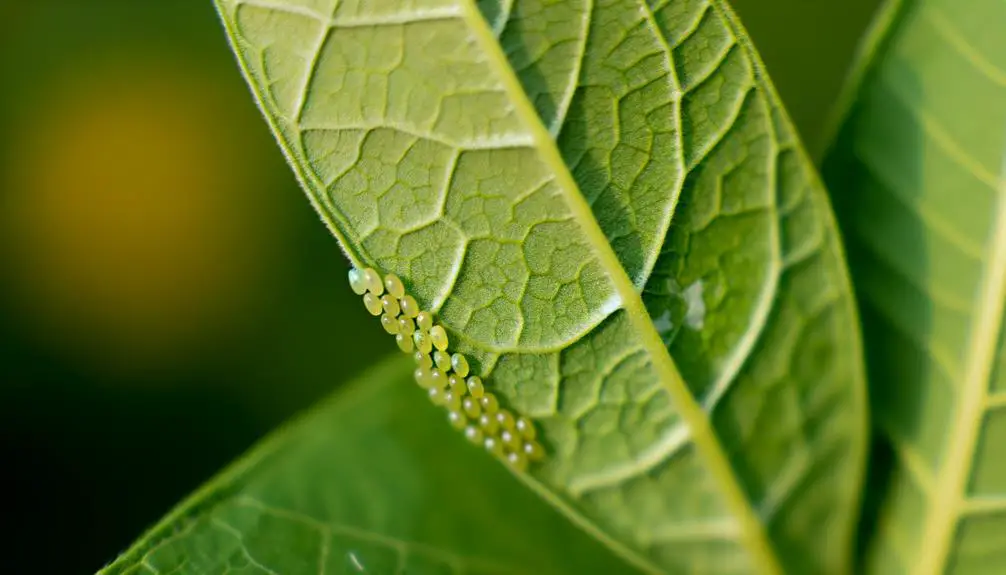
Monarch eggs are typically identified by their small, ovate shape and distinctive ridged texture. These eggs, laid singly on the underside of milkweed leaves, exhibit a pale, creamy coloration.
The ridged surface of the egg, resembling fine vertical lines, can be observed under magnification, revealing a structure that aids in species identification. Typically, the eggs are less than 1.2 millimeters in height.
The placement of the egg on the host plant is another significant identifying factor; monarch females strategically choose the upper portions of milkweed leaves.
These observations, combined with their unique surface morphology and specific oviposition sites, facilitate the accurate identification of monarch eggs in natural habitats.
Egg Shape and Size
The monarch butterfly egg, characterized by its diminutive, ovate shape and intricate ridged texture, measures approximately 1.2 millimeters in height. These eggs exhibit a delicate, elongated form, tapering subtly towards the apex.
The surface is adorned with fine longitudinal ridges that converge at the top, creating a distinctive pattern essential for species identification.
Encased within these minuscule structures, the developing larva relies on the precise architectural design for protection and nutrient exchange.
Often laid singly on the underside of milkweed leaves, the egg's small size and unique morphology necessitate close inspection for accurate observation.
This precise dimensional and structural composition underscores the evolutionary adaptations monarchs have developed to guarantee reproductive success.
Color Variations
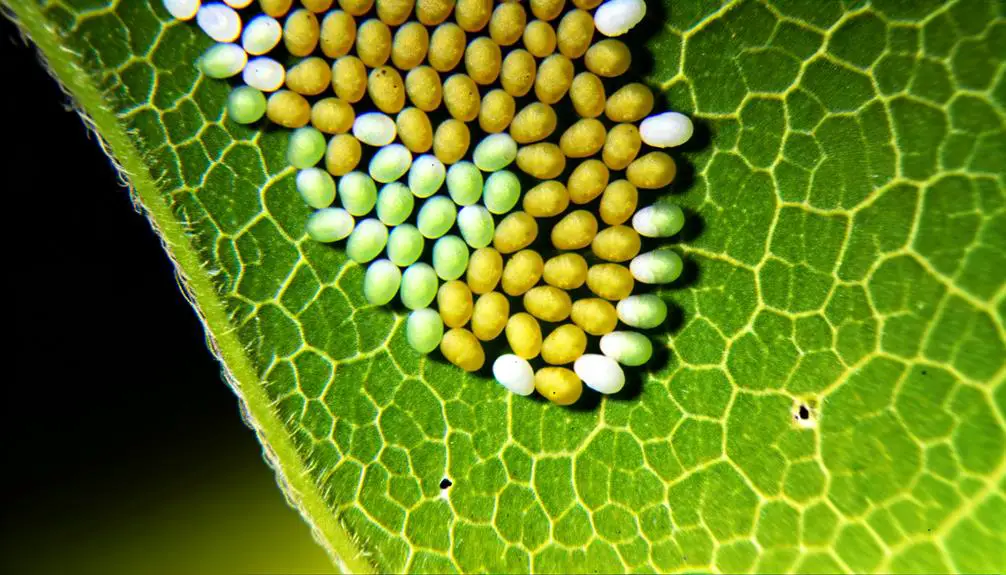
In examining the color variations of monarch butterfly eggs, one observes a progression from a creamy white to a pale yellow as the embryonic development advances. This color transformation is indicative of the physiological changes occurring within the egg. Initially, the creamy white hue signifies the early stages of development, with minimal differentiation. As the embryo matures and cellular processes intensify, the egg adopts a pale yellow shade.
| Development Stage | Egg Color |
|---|---|
| Early | Creamy White |
| Mid | Light Yellow |
| Late | Pale Yellow |
Understanding these color variations provides essential insights into the developmental timeline of monarch butterfly eggs, facilitating accurate identification and study of these critical life stages in a natural habitat.
Egg Texture Details
Surface texture analysis of monarch butterfly eggs reveals a distinct microstructure characterized by a finely ridged exterior.
These ridges, or longitudinal striations, appear as fine lines that run from the apex to the base of the egg, providing structural integrity and potentially aiding in the adhesion to milkweed leaves.
Under magnification, the surface exhibits a semi-transparent, glossy quality, allowing subtle internal features to be observable.
The eggshell, composed primarily of chitin, demonstrates both rigidity and slight elasticity.
This texture not only facilitates protection against environmental stressors but also plays a role in moisture retention, essential for embryonic development.
The intricate texture serves as a key identification marker for distinguishing monarch eggs from other Lepidoptera species.
Egg Placement Patterns
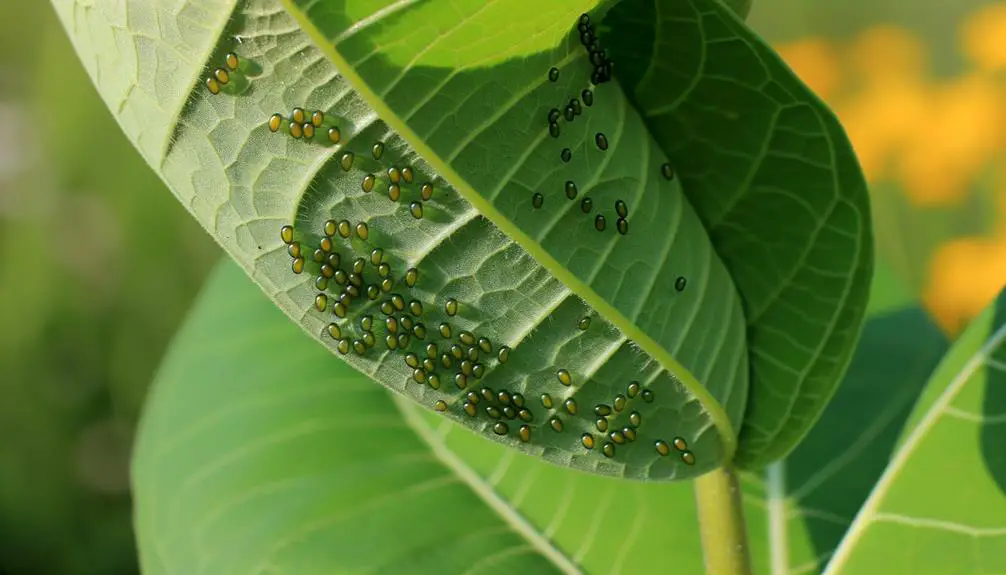
Monarch butterflies exhibit a strategic approach in selecting specific locations on milkweed plants to lay their eggs, often favoring the underside of leaves to minimize predation and environmental exposure.
This behavior enhances the likelihood of survival by shielding the eggs from direct sunlight, desiccation, and potential predators.
Observations indicate that eggs are typically deposited singly rather than in clusters, reducing intraspecific competition among emerging larvae.
Female monarchs also demonstrate a preference for younger, tender leaves, which provide ideal nutritional value for the hatching larvae.
The precise placement is essential, as it guarantees that the larvae have immediate access to a food source upon emergence.
These meticulous egg placement patterns reflect an evolved adaptation to maximize reproductive success.
Viewing Eggs Safely
When observing butterfly eggs on milkweed, it is essential to employ gentle observation techniques to prevent damage to the delicate structures.
Utilizing tools such as magnifying glasses can enhance visibility while minimizing physical contact.
Additionally, care should be taken to avoid potential hazards, such as inadvertently disturbing the plant's natural ecosystem or exposing the eggs to predators.
Gentle Observation Techniques
To guarantee safe observation of butterfly eggs on milkweed, it is essential to employ meticulous and non-intrusive techniques. Use a magnifying glass to closely examine the eggs without touching them. Observe during daylight when natural light is ideal, minimizing disturbance to the plant and eggs. Document findings with photographs rather than physical handling. Ascertain observation sessions are brief to reduce stress on the ecosystem.
| Technique | Description |
|---|---|
| Magnifying Glass | Enhances visibility of eggs without physical contact. |
| Natural Lighting | Uses sunlight for clear observation, avoiding artificial light interference. |
| Photographic Record | Captures detailed images for study without handling the eggs. |
| Brief Sessions | Limits time spent near the eggs to minimize disruption. |
| Observation Timing | Aligns with butterflies' natural behavior for accurate monitoring. |
Employ these methods to foster a respectful and scientifically sound approach to studying butterfly eggs on milkweed.
Avoiding Potential Hazards
Guaranteeing the safety of butterfly eggs during observation necessitates a keen awareness of potential hazards, such as predators, environmental stressors, and human-induced disturbances.
Predatory insects, like ants and wasps, pose significant threats; therefore, minimizing their access is essential.
Environmental stressors, including extreme temperatures and heavy rainfall, can be mitigated by choosing ideal observation times and employing protective measures, such as temporary shelters.
Human-induced disturbances, such as trampling or inadvertent damage, can be avoided by maintaining a respectful distance and using non-intrusive observation tools like magnifying glasses.
Adhering to these precautions not only safeguards the delicate eggs but also guarantees the continuity of critical research on butterfly life cycles and population health.
Protecting Milkweed Habitats
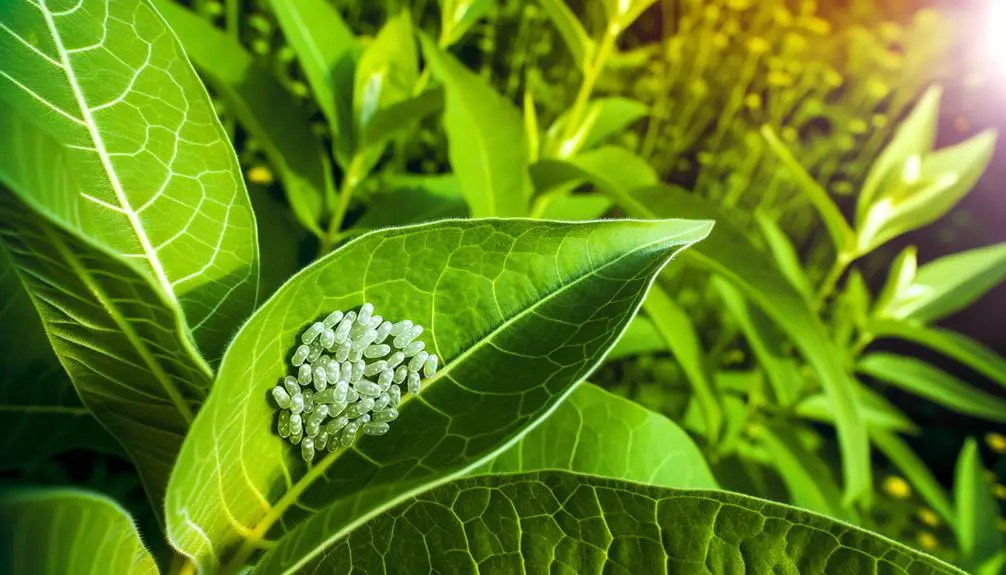
The conservation of milkweed habitats is essential for the survival of monarch butterflies and the maintenance of ecological biodiversity. Milkweed serves as the primary host plant for monarch larvae, providing necessary nourishment during their early developmental stages.
Preservation efforts should focus on mitigating habitat destruction caused by urbanization, agricultural expansion, and pesticide usage. Effective strategies include establishing protected areas, promoting native milkweed planting, and implementing integrated pest management practices.
Detailed land-use planning and environmental impact assessments are vital to identify and safeguard key milkweed populations. Additionally, public education and community engagement are imperative to foster sustainable practices and support for milkweed conservation initiatives.
Ensuring the persistence of these habitats directly contributes to the resilience of monarch populations and broader ecological health.
Encouraging Butterfly Populations
To promote robust butterfly populations, it is essential to implement targeted conservation strategies.
Planting native milkweed species supports larval development, while ensuring access to clean water sources is crucial for adult butterflies.
In addition, minimizing pesticide use mitigates chemical exposure, thereby enhancing survival rates across various life stages.
Planting Native Milkweed
Establishing native milkweed in local ecosystems is crucial for supporting the life cycles of butterfly populations, particularly the monarch butterfly. Native milkweed species provide critical habitats and breeding grounds. Choosing the right species for your region guarantees the plants thrive and offer peak nourishment. Here is an illustrative table of native milkweed species, their preferred habitats, and key characteristics:
| Milkweed Species | Habitat Type | Key Characteristics |
|---|---|---|
| Asclepias tuberosa | Dry, sandy soils | Bright orange flowers |
| Asclepias incarnata | Wetlands, swamps | Pink clusters, tolerates moisture |
| Asclepias syriaca | Fields, meadows | Large leaves, tall stems |
| Asclepias speciosa | Prairies, grasslands | Fragrant flowers, hairy stems |
| Asclepias viridis | Rocky slopes | Green flowers, drought-resistant |
Planting these species enhances biodiversity and aids conservation efforts.
Providing Clean Water
In addition to planting native milkweed, providing clean water sources is fundamental for sustaining healthy butterfly populations and ensuring their hydration needs are met.
Butterflies exhibit a behavior known as ‘puddling,’ where they seek out moist areas for water and important minerals. To facilitate this, shallow dishes filled with sand and water, or damp sponges, can be strategically placed in butterfly habitats. Regular maintenance of these water sources is critical to prevent contamination and the proliferation of harmful pathogens. Additionally, observing the residues left behind can provide insight into butterfly health and diet, as their waste may vary based on nutrient intake. The butterfly poop appearance is typically a liquid or semi-solid substance that can range in color depending on the particular minerals and food sources consumed. Ensuring a clean and fresh water supply will help support healthy butterflies and encourage more frequent puddling behavior.
Additionally, incorporating natural features such as small ponds or birdbaths with gently sloping sides can offer accessible hydration points. Ensuring the availability of clean water not only supports butterfly health but also enhances their reproductive success and longevity.
Reducing Pesticide Use
Minimizing pesticide use is critical for fostering robust butterfly populations and promoting overall ecosystem health.
Pesticides, particularly neonicotinoids, are known to detrimentally affect non-target species, including butterflies. These chemicals can contaminate nectar and pollen, impairing larval development and adult health.
For instance, monarch butterflies (Danaus plexippus) rely on milkweed (Asclepias spp.) for oviposition and larval sustenance. Pesticide residues on milkweed can lead to decreased egg viability and larval mortality.
Employing integrated pest management (IPM) strategies—such as biological control agents, pheromone traps, and organic alternatives—can mitigate these adverse effects.
Additionally, creating pesticide-free buffer zones around butterfly habitats can further safeguard these pollinators, ensuring their survival and contributing to biodiversity conservation.
Conclusion
In the intricate tapestry of nature, milkweed serves as the cradle for the nascent monarchs, embodying the delicate balance of ecosystems.
The myriad forms and hues of butterfly eggs, meticulously placed, reflect the diversity and complexity of life itself. Observing these phenomena without disturbance guarantees the ongoing symphony of metamorphosis.
Protecting milkweed habitats is paramount, fostering an environment where these winged voyagers can thrive, symbolizing resilience and continuity in the ever-turning wheel of ecological cycles.

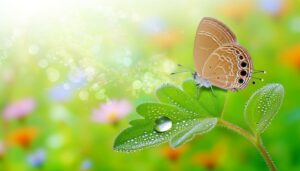

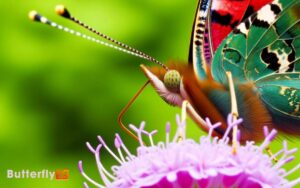



безопасная сделка аккаунтов услуги по продаже аккаунтов
продажа аккаунтов соцсетей маркетплейс аккаунтов соцсетей
аккаунт для рекламы https://magazin-akkauntov-online.ru
маркетплейс для реселлеров магазин аккаунтов социальных сетей
покупка аккаунтов маркетплейс для реселлеров
гарантия при продаже аккаунтов продажа аккаунтов
продажа аккаунтов соцсетей площадка для продажи аккаунтов
Secure Account Sales Sell Account
Account trading platform Account Acquisition
Account trading platform Account Buying Platform
Secure Account Purchasing Platform Buy Account
Secure Account Purchasing Platform accountsmarketplacehub.com
Account market Account Acquisition
Gaming account marketplace Account Trading Platform
Accounts for Sale Account exchange
Ready-Made Accounts for Sale Account Store
Database of Accounts for Sale Account Store
Buy Pre-made Account https://socialmediaaccountsale.com
sell account https://cheapaccountsmarket.com
website for selling accounts find accounts for sale
buy pre-made account profitable account sales
buy accounts find accounts for sale
account selling service account sale
verified accounts for sale buy accounts
sell account account buying platform
account purchase account store
accounts for sale gaming account marketplace
accounts marketplace gaming account marketplace
account trading platform accounts marketplace
sell account secure account sales
find accounts for sale buy pre-made account
account market account marketplace
ready-made accounts for sale sell account
account selling service ready-made accounts for sale
secure account purchasing platform purchase ready-made accounts
social media account marketplace account trading platform
sell account buy pre-made account
account sale social media account marketplace
profitable account sales secure account purchasing platform
account market buy and sell accounts
website for selling accounts account market
marketplace for ready-made accounts account marketplace
account trading service account buying service
account acquisition online account store
secure account sales website for buying accounts
account exchange account marketplace